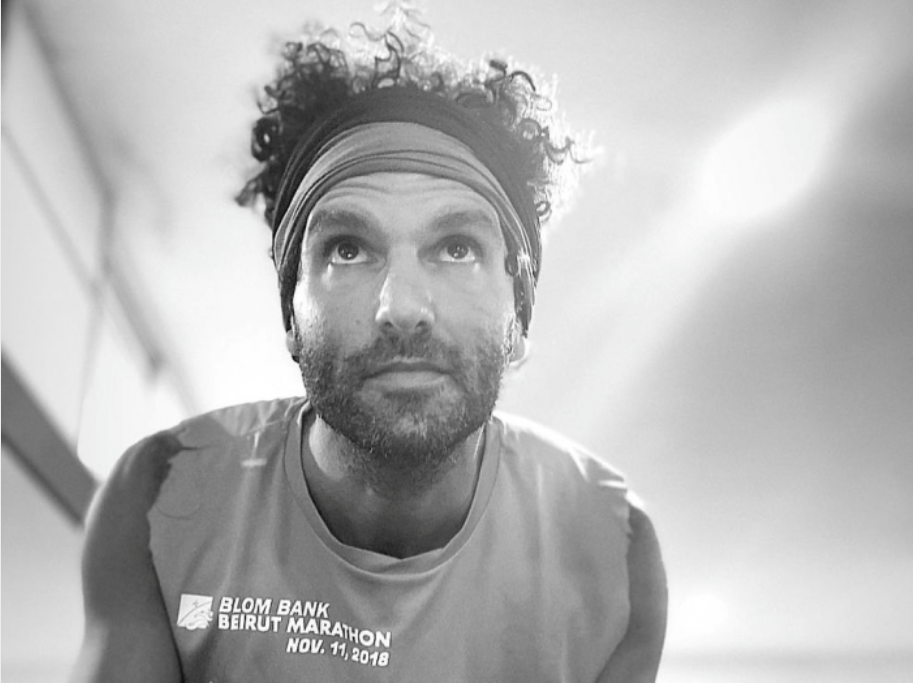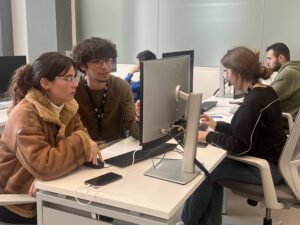Everything, be it a goal, dream or aspiration is within reach, according to Patrick Gharios, an entrepreneur by profession, and a triathlete and drummer by passion. Sharing his own personal experiences, he credits the power of habit for how he shapes and lives a life of fulfillment.
BDD’s team sat with Patrick (PG), to get inspired, and gain insights into the tools he uses every day, to stay motivated, consistent and goal-oriented.
BDD: With everything that has gone on over the past year, in addition to running a growing business, how do you achieve work / life balance?
PG: I am into sports. I am a triathlete and give a spinning class at BDD every Thursday. I also am a drummer, and have a passion for technology. The key to maintain all these areas of my life that are important to me, starts with power of creating a habit. As human beings, we are programmed by default We want to put in the least effort and come out with the biggest reward. We generally are not willing to tolerate friction or resistance. Yet, once you realize and accept this, you can tackle it in a different way.
The way I organize myself starts with visualization exercises (techniques at the end of the post) in everything I do. I live any experience by visualizing it first. I cover all parts of the experience and check in to see if it is satisfying or fulfilling. Does welcoming this future experience make me smile or not? This helps me define by direction, whether in sports or work. I envision the outcomes. If the visualization exercise proves to be exciting enough, I create a new system for it and attach it to a plan. I see my life as a set of multiple systems, whether in sports, music or work. A system can be defined as a box that has inputs (efforts / energy) and outputs (rewards, small achievements) that feedback as motivators for the effort exerted to keep moving forward.
On this note, everyone says “find your passion” – I say no, find something that is appealing to you first, do it over and over again and then that thing becomes a passion. Passion cannot be found as a first step – so, visualization helps to find that exciting thing. I find it the easiest way to come up with a certain energy and willpower to start because it comes from the inside and extends outwards.
BDD: How do you translate that into tangible plans?
PG: From there, once the visualization appeals to me, I create a system for it and map a plan to fulfil it. The key is to put together a plan with different criteria. The plan needs to be easy to achieve, based on a dream or goal that appears unattainable. It needs to include small steps that are attainable, complemented with small rewards. For example, when I wanted to start running, I began with just 10 minutes a day, even though I had the endurance to do more. Through this, I created a habit, which I started adding to day by day.
Then I try to make it measurable and track my progress in every way, whether it’s time, heart rate and calories when running. All these elements add up and provide you with the confidence to keep you on track, and gauge what is working and what is not working.
Third, when creating a new habit, what keeps me moving forward, is to get a sense of reward. We are always focused on the next point or milestone. We really need to take a moment, enjoy the reward and be mindful about it.
Then I conduct a small periodical tests to ensure everything is in order – if what I am working on, is actually working. The test needs to come first, and then the reward follows, if I can identify that progress has been achieved. These kind of rewards can be used as motivators when you are feeling demotivated. You can use them as motivational cards to remind yourself of the rewards you have achieved, and to not give up or sacrifice all the hard work.
BDD: What advice would you give to someone who wants to create a new habit?
PG: Visualize it to make it exciting first, then execute your personal crafted plan. Step 1) Keep the plan simple and enjoyable. Step 2: ensure it is achievable and measurable. Step 3) Test to make sure the plan is being executed correctly and allow the rewards to serve as feedback for step 1. Then Step 4) repeat and fine tune the plan through your personal acquired experience and creativity.
To form a new habit, consistency is key, as there is no shortcut to anything. It is also important to enjoy the journey and the small things you are doing along the way. It’s all about enjoying the journey which leads to reaping the rewards when attaining the goal. However, it is important to note that consistency is not easy. We are not motivated every day and the key is to put consistency on top of everything and that includes sacrificing a lot of social activities, or other aspects of your life. But trust me it’s worth it because from my experience, no goal is achieved without consistency, which helps filter out the distractions which may arise.
Soon, you will find that you achieved your goals without even knowing it. Goals need to be interesting to you, not society, family or friends. It’s preferable you do the work in silence and let your actions speak for you. This helps you create your own identity, and present it to others.
When you surround yourself with likeminded people, who share the same passions (especially the case in the sports scene), you ultimately create a motivation cycle, with others that share the same goals. Anyone can achieve anything, if they just put their mind to it – it doesn’t need superpowers or ideal genes.
BDD: So what does your typical day routine look like?
PG: You really need to love your routine and be comfortable enough doing stuff on your own for habits to stick. I wake up at 6am every day, without an alarm. I have breakfast, a coffee and read a bit. Then I head to the gym or a session, whether biking, running or swimming for 1 hour. I then start my work day, which lasts about 7 to 8 hours, which is followed by another session of sports, music or yoga at night. However, the motivation needs to come from within and not from others. I do most of my sessions alone and I enjoy my own company – that helps me stay focused and efficient in the hours I am committing to. Start by making peace with yourself and making yourself your best friend.
I find that once you create a habit and want to form another habit, a concept called habit stacking is interesting to explore. For example, if you are used to committing to one hour of sports every morning, and also want to mediate, do them sequentially after one another. The second activity is more prone to become another habit.
Every goal is achievable. Over time these habits create a character that reflects your own identity and your beliefs, ultimately shaping you into a better version of yourself. It just takes commitment and consistency and enjoying the process and rewards as they come.
–
Visualization Exercises
There are many ways to carry out visualization exercises. For Patrick, it is a form of meditation. You close your eyes, do some breathing techniques (the 478 technique for example), get into a relaxed state, and start the visualization process which is mainly living an experience virtually in every detail possible. Here the person can assess if they are excited enough to start, and helps clear out the noises which may hinder pursuing this direction.




